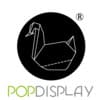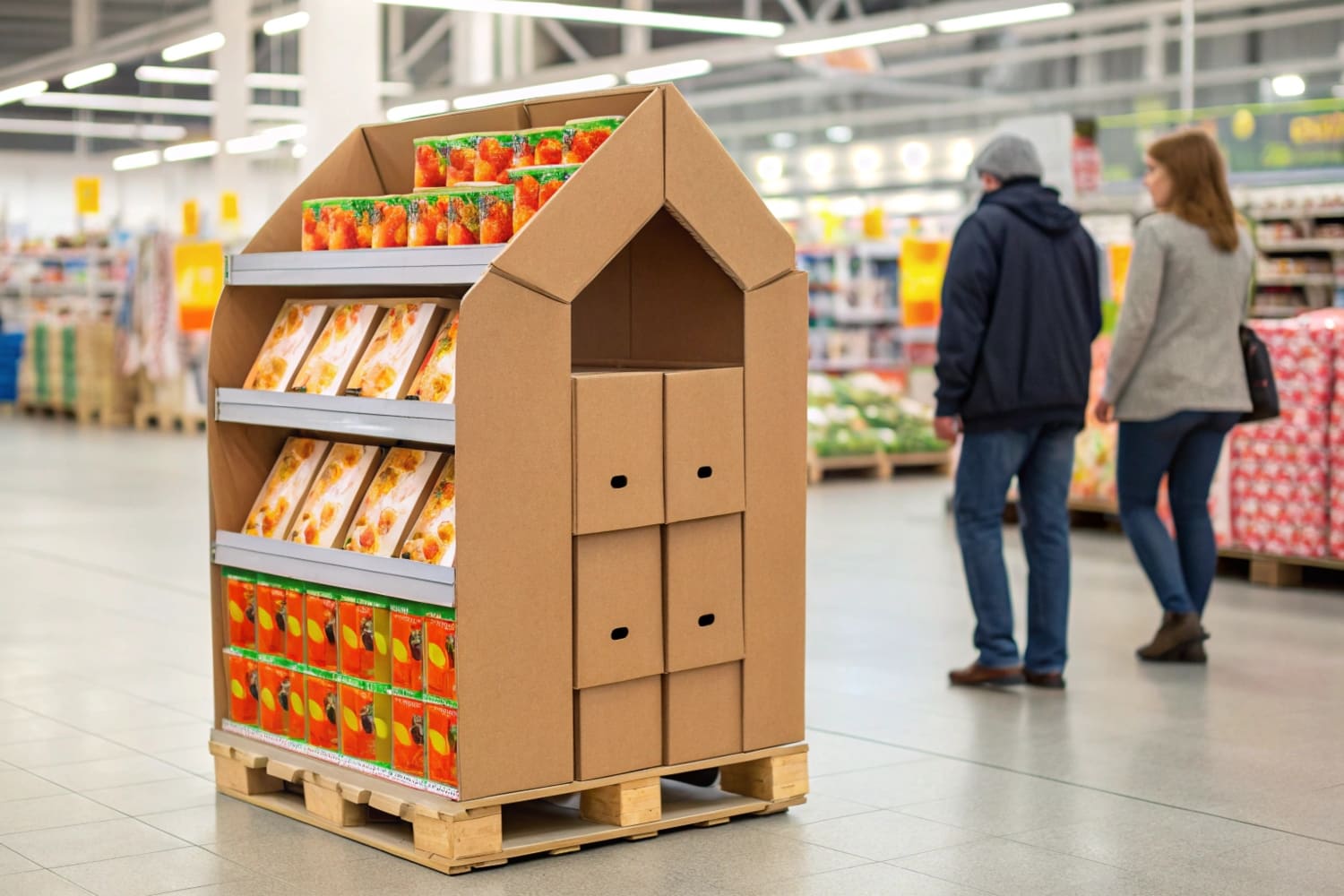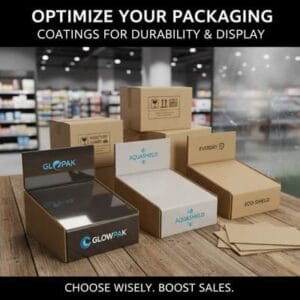I see buyers struggle with mismatched packaging and displays. It hurts launches. It wastes budget. I fix that with simple, fast, custom solutions.
Yes. You can order custom packaging together with your point-of-purchase (POP) displays. One supplier can design, print, test, and ship both in one workflow, so branding, materials, sizes, and timelines match. This reduces errors, speeds launches, and lowers total landed cost.
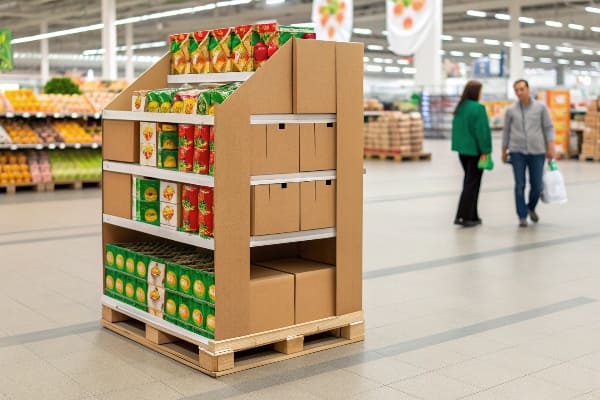
I ship full programs where cartons, inserts, and displays arrive as one system. This keeps color, dielines, and fit aligned. It also keeps deadlines safe when retail windows are tight.
Is packaging POS?
Retail teams ask if packaging sits inside POS, beside it, or counts as POS. The confusion slows quotes and approvals, and it leads to bad fixture choices.
Packaging is not the same as POS displays, but it can be part of a POS program. Packaging protects and presents the product, while POS displays hold and promote it at retail.
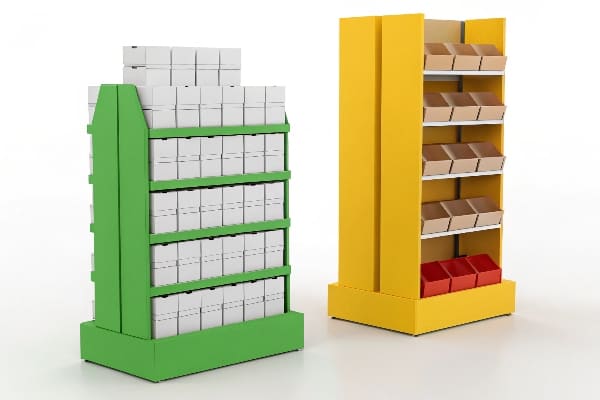
Definitions that keep projects clean
I keep scopes tight by naming each element and matching it to a deliverable. This avoids cost creep and wrong specs during handoff from design to factory.
Clear roles
– Primary packaging1: The box or blister that touches the product.
– Secondary packaging: The carton or sleeve that groups units.
– POS/POP display2: Floor, pallet, shelf, or counter unit that holds packaged goods.
– Transit packaging: Master cartons and protective inserts for shipping.
How I separate budgets
I write two lines in quotes: packaging (SKU-level) and POS (fixture-level). I add a third line for transit. This makes approvals simple and helps buyers compare apples to apples.
Quick comparison table
| Item | Purpose | Owned By | Print Method | Common Material |
|---|---|---|---|---|
| Primary Packaging | Protect product, show brand | Product team | Offset/Digital | Paperboard, blister, film |
| Secondary Packaging | Group units, add data | Product/Trade | Flexo/Offset | Corrugated, sleeves |
| POS/POP Display | Promote and hold stock | Trade/Marketing | Flexo/Litho/Dig. | Corrugated, foam board |
| Transit Packaging | Ship safely, reduce damage | Operations | Flexo | Corrugated, edge guards |
I learned this split the hard way. I once bundled packaging art into a POS line by mistake. The store date slipped a week because approvals hit the wrong inbox. Now every project starts with named roles and a bill of materials that maps to these four rows.
Which of the following is an example of a point of purchase display?
Shoppers meet your brand at the shelf, not in the deck. Teams that know real retail formats choose better. The right format lifts sell-through and lowers returns.
Examples include floor displays, countertop displays, pallet displays, tray/shelf displays, and clip strips. Each format fits a different traffic pattern, product weight, and promo window.
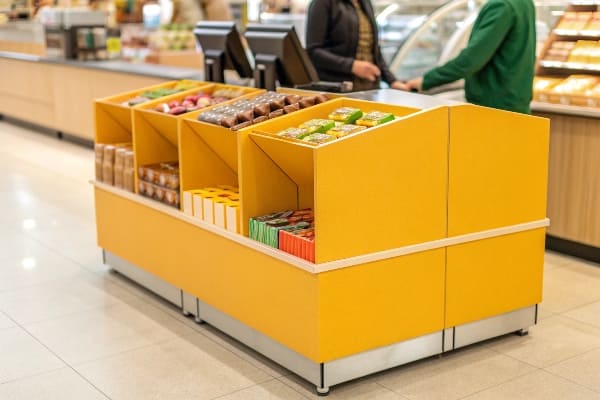
How I choose the right format
I start with store map, unit weight, and target take-rate. I also check pack-out speed in store. This matters more than a fancy render, because staff need to load it fast and keep it neat.
Format selection checklist
-* If the product is heavy, I use reinforced floor or pallet displays3 with double-wall corrugate.
— If the product is small or impulse, I use countertop or clip strips near checkout.
— If the retailer uses high-bay flow, I design pallet displays that go straight from truck to aisle.
— If color is strict, I recommend litho-lam or high-res digital over flexo.
Format at a glance
| Display Type | Best For | Typical Lifespan | Ship Style | Setup Time |
|---|---|---|---|---|
| Floor Display | New launches, mid/heavy items | 8–12 weeks | Flat/Prepack | 5–15 min |
| Countertop Display | Impulse, small packs | 4–8 weeks | Prepack | 2–5 min |
| Pallet Display | Warehouse clubs, bulk | 6–12 weeks | Pre-pallet | 0–5 min |
| Tray/Shelf Display | Line extensions on shelf | 4–8 weeks | Flat | 3–8 min |
| Clip Strip | Lightweight add-ons | 2–6 weeks | Flat | 2–3 min |
Two years ago I supported a hunting retailer launch. Crossbow accessories were dense and long. A countertop unit tipped in testing. We switched to a narrow footprint floor display with a steel base plate hidden under a corrugated skirt. Sell-through rose 27% because shoppers could handle the items safely, and the unit stayed stable all season.
Can you customize packaging with Printful?
Teams that run print-on-demand want speed and small batches. They ask if a platform can handle branded boxes and inserts without minimums.
Yes, Printful offers some custom packaging options like branded pack-ins and exterior branding for select products, but it is limited compared with fully custom retail packaging from a corrugated converter.
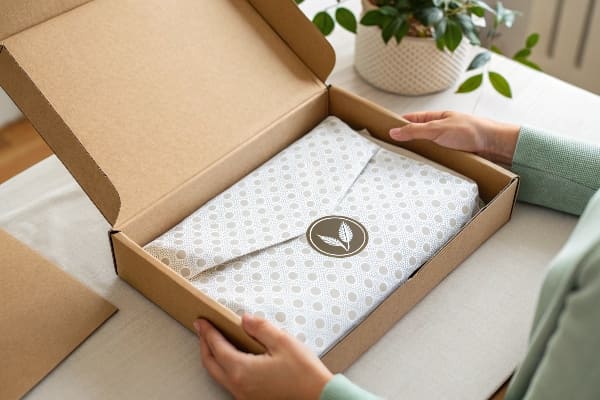
When I use POD vs a converter
I use print-on-demand for tests and content drops. I use a corrugated partner for retail rollouts. This split keeps risk low and quality high where it matters.
What I compare
— Lead time and reorder speed
— Control over dielines and board grade
— Color control against brand Pantones
— Unit economics at volume
— Ability to co-pack into displays
Side-by-side view
| Criterion | Print-on-Demand4 (e.g., Printful) | Corrugated Converter (Factory) |
|---|---|---|
| Minimum Order | Very low | Medium to high |
| Dieline Freedom | Template-based | Full custom |
| Board Grades | Limited | Wide range (E/B/C flute etc.) |
| Color Control | Good, some limits | Tight control, proofs, drawdowns |
| Co-Packing with POP | Rare | Standard |
| Unit Cost at Scale | Higher | Lower |
| Speed for Small Runs | Excellent | Good with digital lines |
I once helped a small outdoor brand test three UPCs. We used a POD mailer with a branded card for DTC while I sampled a corrugated shelf tray for retail. The POD flow validated messaging in two weeks. The tray sample locked size and weight. When the buyer confirmed the program, we shifted to factory runs with exact Pantone matches and E-flute board. This saved cash early and kept retail quality later.
What does custom packaging mean?
Buyers use “custom” for many things. Teams argue about it, lose days, and still miss color. I define it in simple terms and tie each word to a deliverable.
Custom packaging means packaging designed to your product’s size, materials, printing, and brand rules, with specific dielines, proofs, and tests that match your supply chain and retail goals.
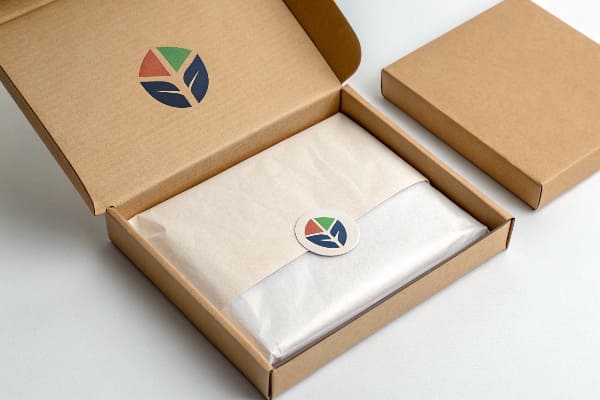
My working definition that speeds approvals
I always attach a spec sheet5 with four parts. Each part maps to a sign-off. This keeps design, purchasing, and quality aligned.
The four parts
– Structure: Exact dimensions, flute, caliper, joints, and closures
– Graphics: Pantones, finishes, varnish, and barcode area
– Testing: Drop, compression, and transit tests with pass criteria
– Operations: Pack plan, pallet pattern, and co-packing steps
Spec components table
| Component | What I Document | Why It Matters |
|---|---|---|
| Dieline | Cut/crease lines with tolerances | Fit is correct and assembly is smooth |
| Board | Material grade (e.g., E-flute, 250gsm liner) | Strength, weight, and print performance |
| Color | Pantone/CMYK drawdowns | Brand consistency across runs and sites |
| Proofs | Digital and press proof approvals | Catch errors early |
| Tests | ISTA/retail-specific checks | Fewer damages and returns |
| Logistics | Flat-pack size, pallet pattern | Lower freight and faster in-store setup |
A few seasons back, I ran into color drift6 on a hunter-green box tied to a fall launch. I added a drawdown step and a lightfastness check to the spec. The next runs matched perfectly across three lines. The buyer noticed. Reorders became routine, and the team stopped fighting about greens on email threads.
Conclusion
You can bundle packaging and POP into one coherent program. Define roles, pick the right format, choose the right supplier, and lock specs early to protect launch dates.
Understanding primary packaging is crucial for ensuring product safety and brand visibility, making it a key area to explore. ↩
Exploring POS/POP displays can enhance your marketing strategies and improve product visibility in retail environments. ↩
Explore this link to understand how pallet displays can enhance product visibility and sales efficiency in retail environments. ↩
Explore the advantages of Print-on-Demand to understand how it can streamline your production and reduce risks. ↩
Understanding spec sheets can enhance your project management and ensure alignment across teams. ↩
Preventing color drift is crucial for brand consistency; explore solutions to maintain color accuracy in your projects. ↩
